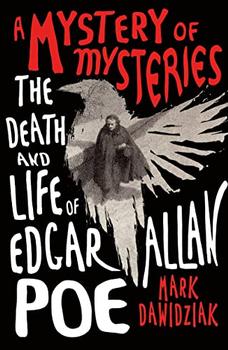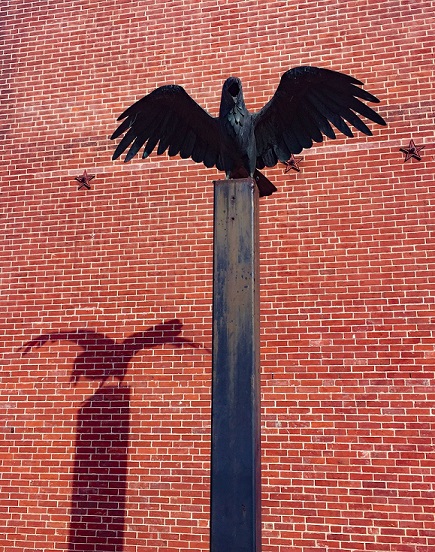Summary | Excerpt | Reviews | Beyond the Book | Read-Alikes | Genres & Themes | Author Bio

The Death and Life of Edgar Allan Poe
by Mark DawidziakThis article relates to A Mystery of Mysteries
 By 1838, Edgar Allan Poe had earned a reputation as a sharp literary critic and skillful editor while based in Richmond, Virginia. To make the most of his talents, he had to move to a bigger and better arena. Boston was the center of book publishing, and New York led the nation in daily journalism and newspapers. But the magazine trade and American Gothic fiction, Poe's niches, flourished in Philadelphia, which was at that time, in the words of The Library Company of Philadelphia, "perhaps the most enlightened, genteel, urbane, and humane of American cities." In Mark Dawidziak's Poe biography A Mystery of Mysteries, scholar Edward G. Pettit of Philadelphia's Rosenbach Museum notes, "During the first half of the nineteenth century, more Gothic works [were] published in Philadelphia than in any other American city."
By 1838, Edgar Allan Poe had earned a reputation as a sharp literary critic and skillful editor while based in Richmond, Virginia. To make the most of his talents, he had to move to a bigger and better arena. Boston was the center of book publishing, and New York led the nation in daily journalism and newspapers. But the magazine trade and American Gothic fiction, Poe's niches, flourished in Philadelphia, which was at that time, in the words of The Library Company of Philadelphia, "perhaps the most enlightened, genteel, urbane, and humane of American cities." In Mark Dawidziak's Poe biography A Mystery of Mysteries, scholar Edward G. Pettit of Philadelphia's Rosenbach Museum notes, "During the first half of the nineteenth century, more Gothic works [were] published in Philadelphia than in any other American city."
In Pettit's view, the brand of Gothic fiction Philadelphia is famous for was somewhat of a departure from the classical, European, haunted-castles-and-deceased-women variety. The innovation was psychological: "The Horror no longer tends to be a supernatural outside threat. It's now inside the home and inside someone's head… Philadelphia becomes the crucible for Poe's imaginative genius."
Why would this city founded by Quakers, where the Second Continental Congress adopted the Declaration of Independence, an early leader of foreign commerce, be America's main producer of nightmarish tales? For precisely those reasons. William Penn acquired the land from King Charles II with the intention that it be a place for religious tolerance. Due to its prime location, where the Delaware and Schuylkill rivers met, near plenty of farmland and coal and ore deposits, Philadelphia became a very wealthy area during the early Industrial Revolution. Social freedoms and economic prosperity drove an arts culture informed by the city's historical connection to the democratic ideal. Gothic fiction was a way to examine that ideal by speculating about its darker side.
For reference, while he was living in the City of Brotherly Love from 1838 to 1844, Poe's creative development moved from "The Fall of the House of Usher" (1839), a tale taking place in a declining country estate, concerning insanity, the suggestive power of art, heredity and doom on various symbolic levels, to "The Tell-Tale Heart" (1843), which explores mental illness much more intimately, practically simulating it.
However, it's not so easy to say precisely to what degree the city was responsible for Poe's evolution. Proto-Gothic texts about madness and the seduction of innocents, such as the bestseller Charlotte Temple (1791) by Susanna Rowson, begin appearing in Philadelphia in the late 1700s. The wide appeal of Rowson's novel didn't have so much to do with viscerality, like the kind later seen in Poe's story "The Pit and the Pendulum," but with its representation of the double bind the new class of educated American women were in at this time: Having a wider social and intellectual purview meant they were open to more abuse from men. The novel is about a girl who is seduced by a military officer with the complicity of a teacher at her boarding school. This teacher, who, the narrator notes in coded language, "possessed too much of the spirit of intrigue to remain long without adventures," had been taken away from her convent by an officer when she was a young girl herself.
The Philadelphia writers more commonly linked to Poe, Charles Brockden Brown and George Lippard (a friend of and money lender to the author), were political like Rowson, rather than acutely psychological like the later "Raven Man." Brown's Wieland (1798), as described by the Encyclopedia of Greater Philadelphia, deals with central New World issues such as, "the perils of wilderness, the problematic indebtedness of the young democracy to old Europe, and the repressed legacies of war, colonization, and slavery." And Lippard's The Quaker City, or The Monks of Monk Hall (1845) similarly critiques the American aristocracy and the lack of a committed stance on abolition by the religious sect who founded Philadelphia. (Both Charlotte Temple and The Monks of Monk Hall have been cited as the most successful pre-Uncle Tom's Cabin American novels in their times.)
So perhaps the city's influence on Poe was less direct than it seems at first blush. But it wouldn't be beyond the master of fictitious personality to have channeled broad social anxieties into the cramped psyches of his deranged characters. Knowing what was in the air during Poe's most productive period could give us insight into the apparently unmotivated murder in "The Tell-Tale Heart," for instance. Maybe in the mind of the narrator, in which there is no separation between the personal and the cultural, the old man deserves to die because he represents Europe, the parental figure, refusing its child, America, its complete independence. The zeitgeist works on creativity in mysterious ways. In any case, Philadelphia was undoubtedly fertile ground for Poe's imagination to grow.
Edgar Allan Poe National Historic Site, Philadelphia County, Pennsylvania
Source: National Park Service
Filed under Places, Cultures & Identities
![]() This article relates to A Mystery of Mysteries.
It first ran in the March 15, 2023
issue of BookBrowse Recommends.
This article relates to A Mystery of Mysteries.
It first ran in the March 15, 2023
issue of BookBrowse Recommends.






Your guide toexceptional books
BookBrowse seeks out and recommends the best in contemporary fiction and nonfiction—books that not only engage and entertain but also deepen our understanding of ourselves and the world around us.